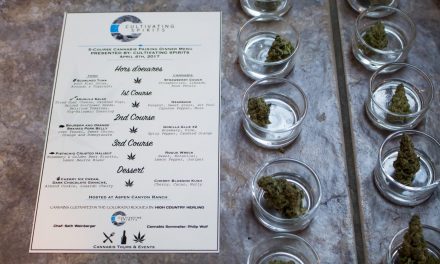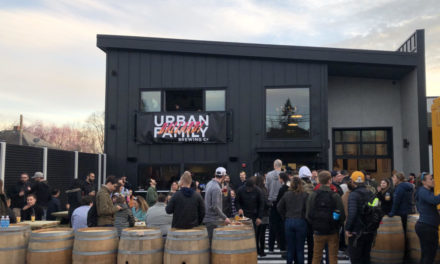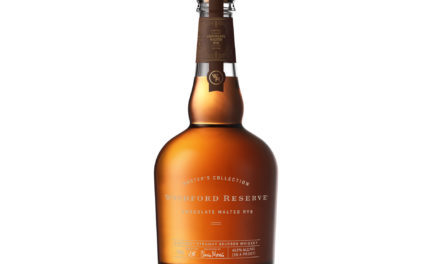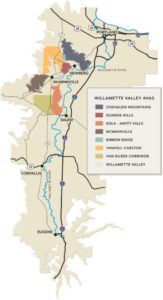 There’s a movement afoot in Oregon’s Willamette Valley to make chardonnay a thing of lithe, almost transparent beauty—showcasing the graceful ballerina in the grape, rather than the lush contralto soprano that often belts forth with considerable vibrato from the cellars of California.
There’s a movement afoot in Oregon’s Willamette Valley to make chardonnay a thing of lithe, almost transparent beauty—showcasing the graceful ballerina in the grape, rather than the lush contralto soprano that often belts forth with considerable vibrato from the cellars of California.
But there’s a big hurdle to overcome, and its name is pinot noir.

By the numbers
Most people who’ve learned how to say, “Willamette, damnit!” are doing so courtesy of having fallen for the region’s considerable abundance (and admitted prowess with) pinot noir. There’s little doubt about the predominance of pinot noir in this valley.
Just look at the vineyard stats for the 3,438,000-acre Willamette Valley, which runs for 100 miles between Oregon’s Cascade Mountains and the Coast Range, and you can clearly see a very small percentage of chardonnay planted here compared to pinot noir. Chardonnay numbers also pale in comparison to the planted acres of Oregon’s second most popular varietal, pinot gris.
In the Willamette alone, there are 15,536 acres of pinot noir, 4,104 of pinot gris, and a scant 1,941 of chardonnay. In all of Oregon, as of 2018, there were 2,400 acres of chardonnay compared to 20,000 acres of pinot noir. Either there’s too much pinot, or not enough chardonnay. Or both.
The Willamette makes up 70 percent of the state’s total wine production, and 83 percent of the pinot noir produced there. Which means chardonnay has an uphill climb. And, it didn’t exactly get off on the right foot.
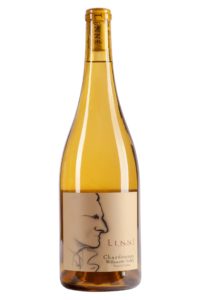 Initially, the chardonnay clones chosen, including UCD108, weren’t suited to the growing conditions of the Willamette’s cool climate. It took some experimenting—and some familiarity with what was working in Burgundy—to bring the right clonal material to bear. Thankfully, due to efforts of those serious about chardonnay in this region, Dijon clones (especially 76, 95 and 96) were planted with success. They seem to reflect the personality of the terroir and form a more harmonious expression of the varietal.
Initially, the chardonnay clones chosen, including UCD108, weren’t suited to the growing conditions of the Willamette’s cool climate. It took some experimenting—and some familiarity with what was working in Burgundy—to bring the right clonal material to bear. Thankfully, due to efforts of those serious about chardonnay in this region, Dijon clones (especially 76, 95 and 96) were planted with success. They seem to reflect the personality of the terroir and form a more harmonious expression of the varietal.
Winemakers from pretty much every corner of this appellation, with brands ranging from mega-large to teensy-tiny, praise the area for its Region 1 cool climate, which is marked by lower average growing season temperatures (55-63°F, right in between the norms for Champagne and Burgundy), a shorter growing season due to inclement weather both early and late, and lower total degree days. This generally means lower temperatures both during the early part of the growing season, along with moderate temperatures during ripening, and cooler temps during harvest. Doesn’t sound much like California, does it?
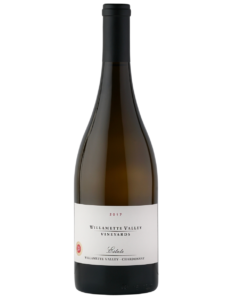
In the glass
The chardonnays I tasted were largely in the 12 to low-13 percent alcohol range, with none going above 13.9 percent, and even that one, from Alloro Estate, displayed a fairly common thread of pear, lime, and ginger—three descriptors you rarely find in California chards.
Other common Willamette chardonnay themes were lemon verbena, citrus, wet stone, massive minerality, white peach, cardamom, tangelo, and tangerine.
Oak was minimal and unobtrusive in most, underplayed to let the freshness of fruit explode.
In general, Willamette chardonnays are wines of restraint, purity, and finesse. Be prepared to be enlightened and impressed. Here are my tasting notes for some of the area’s standouts. (Click the links to learn more about each individual winery.)

2018 Alloro Vineyard, Estate, Chehalem Mountains, 13.9% ABV Fresh lime, freesia, freshly laundered linen, lemongrass, and ginger make this a juicy wine with a sandy texture.
2017 Archery Summit Dundee Hills, 13.5% Honeycomb, jasmine, and flint greet your nose, and the wood in which the wine was barreled is definitely doing backflips, showing up with ripe banana, dried apple, and Cheerios. Sweet flavors of nectarines and apricot flow in a silky river of juice, tinged by lime and ginger.
2017 Bailey Family Wines, Youngberg Hill Vineyard, McMinnville AVA, 12.5% The golden hue makes you think oak, but this is done with zero new barrels. Instead, the richness is from the fruit, which sports aromas of toasted marshmallow, Meyer lemon, roasted chestnut, and whole wheat toast. On the palate, feisty, assertive flavors of pear tart, tangelo, and white peach Danish playfully wind around the intense acid core, which turns up the volume with lime and blood orange. Excellent stuff.
 2018 Bryn Mawr Estate, Eola-Amity Hills, 12.7% Winemaker Rachel Rose is after a savory, complex, austere chardonnay and so she chooses barrels that can accentuate the wine’s depth and natural persistence. Wildflower honey, lemon verbena, brioche, and lavender tease the nostrils. It’s almost like a glassful of Chanel No.5. Brisk flavors of lemon curd, candied ginger, and tangerine, this is super racy and superbly elegant, finishing with candied orange peel.
2018 Bryn Mawr Estate, Eola-Amity Hills, 12.7% Winemaker Rachel Rose is after a savory, complex, austere chardonnay and so she chooses barrels that can accentuate the wine’s depth and natural persistence. Wildflower honey, lemon verbena, brioche, and lavender tease the nostrils. It’s almost like a glassful of Chanel No.5. Brisk flavors of lemon curd, candied ginger, and tangerine, this is super racy and superbly elegant, finishing with candied orange peel.
2017 Chehalem Reserve Estate Chardonnay, Dundee Hills, 12.9% Opening with aromas of gardenias, honeysuckle, pine tar, and unbaked apple pie with lemon and nutmeg, this pops with a surprisingly rich weight on the palate, like a warm croissant with melted butter. Yet, the acid holds fast like a fortress.
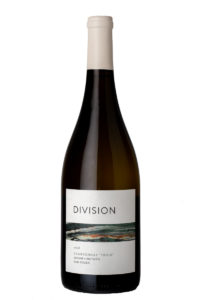 2018 Division Wine Company, “Trois”, Johan Vineyard, Van Duzer AVA, 12.8% Honeysuckle, banana, matchstick, and peach crème brulee are the aromatic stars, while crushed rocks, cardamom, cinnamon spiced caramel apple, comice, and D’anjou pear wrap themselves around a stony core. This biodynamic site boasts Draper Selection cuttings suitcased from Meursault in the 1960s.
2018 Division Wine Company, “Trois”, Johan Vineyard, Van Duzer AVA, 12.8% Honeysuckle, banana, matchstick, and peach crème brulee are the aromatic stars, while crushed rocks, cardamom, cinnamon spiced caramel apple, comice, and D’anjou pear wrap themselves around a stony core. This biodynamic site boasts Draper Selection cuttings suitcased from Meursault in the 1960s.
2018 Domaine de Broglie, Dundee Hills, 13% One of Francis Ford Coppola’s projects, this brand was named to honor Nobel prize-winning Louis de Broglie, a nobleman from Maison de Broglie, a French powerhouse that made many contributions in physics and quantum theory. Winemaker Dave Petterson delivers a light and refreshing lime, kiwi, and kumquat scented chardonnay that breezes easily across the palate with apricot and peach, and that alluring hint of ginger with which this region seems blessed. A summer sipper, to be sure.
2018 Left Coast Truffle Hill, Van Duzer Hills AVA, 13.1% A lovely citrus medley including lime, lemon, and Buddha’s hand greets the nose, along with elderflower, gardenia, and lily of the valley. There’s a pretty intense dollop of ginger and honey cream as well. Flavors of lime, kiwi, white nectarine, fresh ginger, coriander, and orange peel make this a solid example of what the Willamette can deliver.
 2018 Lenné Estate, Yamhill-Carlton, 13.5% A riot of jasmine greets your nose, along with lily of the valley, gardenia, fresh pineapple, mandarin, key lime, and Cracker Jacks. It’s like a county fair in your glass. Fun and festive on the palate as well, pear strudel dominates, along with white, peach, lychee, mandarin, lime, and a hint of Asian Five spice. Truly a fascinating wine.
2018 Lenné Estate, Yamhill-Carlton, 13.5% A riot of jasmine greets your nose, along with lily of the valley, gardenia, fresh pineapple, mandarin, key lime, and Cracker Jacks. It’s like a county fair in your glass. Fun and festive on the palate as well, pear strudel dominates, along with white, peach, lychee, mandarin, lime, and a hint of Asian Five spice. Truly a fascinating wine.
2017 Stoller Reserve, 13.2% Fresh pineapple, minerals, oyster shells, chalk, anise, and a touch of White Linen perfume are just the prelude. Light, lemony, and lively, endowed with pear and white peach, it tiptoes between crisp and deft, and creamy and soft. Excellent stuff, it’s solidly textural, endowed with distinctive ginger cream from barrel fermentation (20 percent new) and lees stirring.
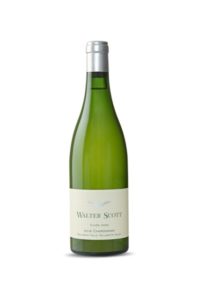 2017 Utopia, Dundee Hills, 13.2% Aromatics of ripe pear, lime, honeycomb, honeysuckle, tangerine, green banana, and dried apple frame the entry. It’s light on the palate, with medium acid. Best served at room temperature.
2017 Utopia, Dundee Hills, 13.2% Aromatics of ripe pear, lime, honeycomb, honeysuckle, tangerine, green banana, and dried apple frame the entry. It’s light on the palate, with medium acid. Best served at room temperature.
2017 Vidon Estate Chardonnay, Chehalem Mountains, 13.2% Made of Dijon clones with native yeast and French barrel fermentation.Bbracing aromas of lemon-lime, honey tangerine, apricot, and almond blossoms, strike a yoga pose with perfectly balanced mandarin, lemon curd, and key lime pie. A perfectly deft and delightful, winsome wine.
 2018 Walter Scott Wines Cuvée Anne, Eola-Amity Hills, 13% Honeysuckle, crushed oyster shells, lemon verbena, and mock orange dominate the nose, along with freshly cut peach. Crisp, almost crunchy flavors of underripe peach, yellow plum, nectarine, and comice pear are presented on a blade of acidity, making this wine a fresh fruit salad.
2018 Walter Scott Wines Cuvée Anne, Eola-Amity Hills, 13% Honeysuckle, crushed oyster shells, lemon verbena, and mock orange dominate the nose, along with freshly cut peach. Crisp, almost crunchy flavors of underripe peach, yellow plum, nectarine, and comice pear are presented on a blade of acidity, making this wine a fresh fruit salad.
2017 Willamette Valley Vineyards Estate, 12.5% Aromas are lime zest and lemonade, with dried lavender and hibiscus. The palate oozes lime and lemon cream, along with Bartlett pear and quince, and there’s a decided creaminess from barrel-fermentation in 28% new French oak, and obvious sur lie aging. A beauty.
















